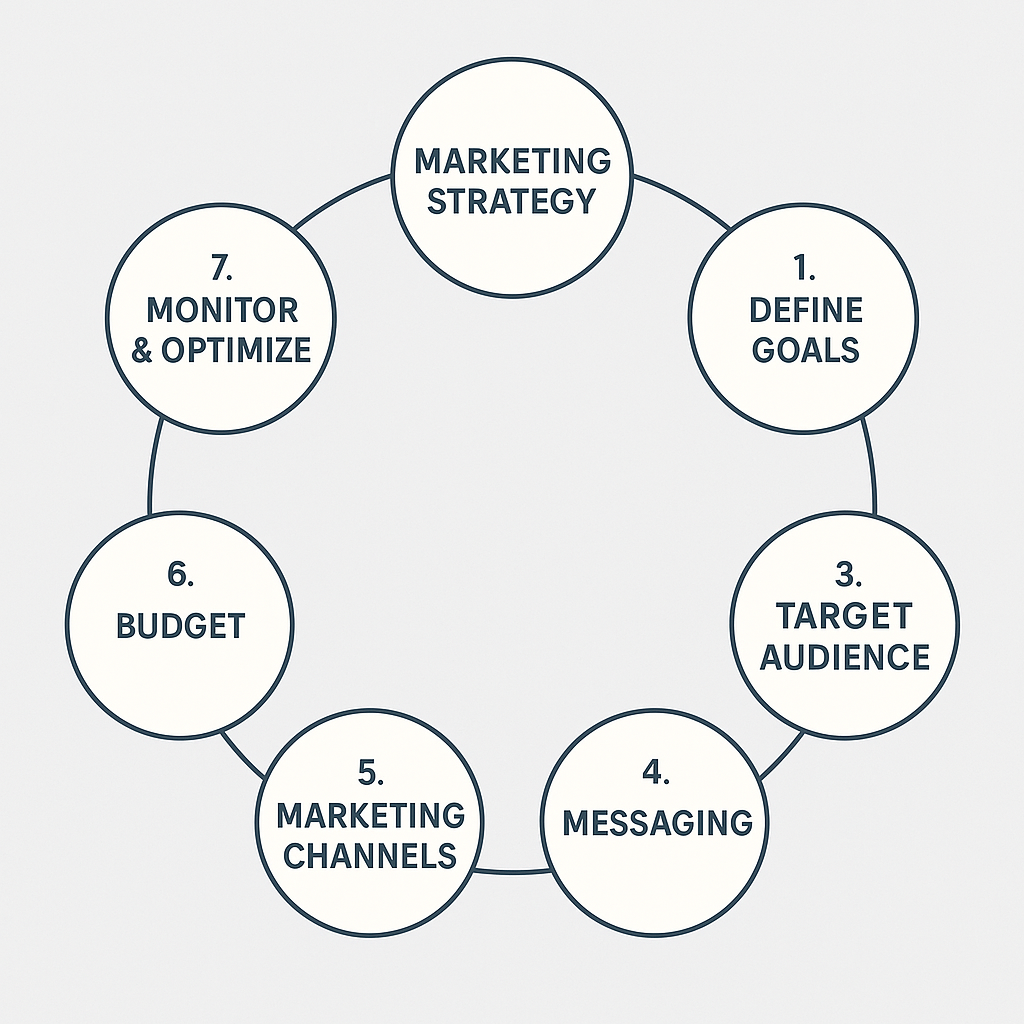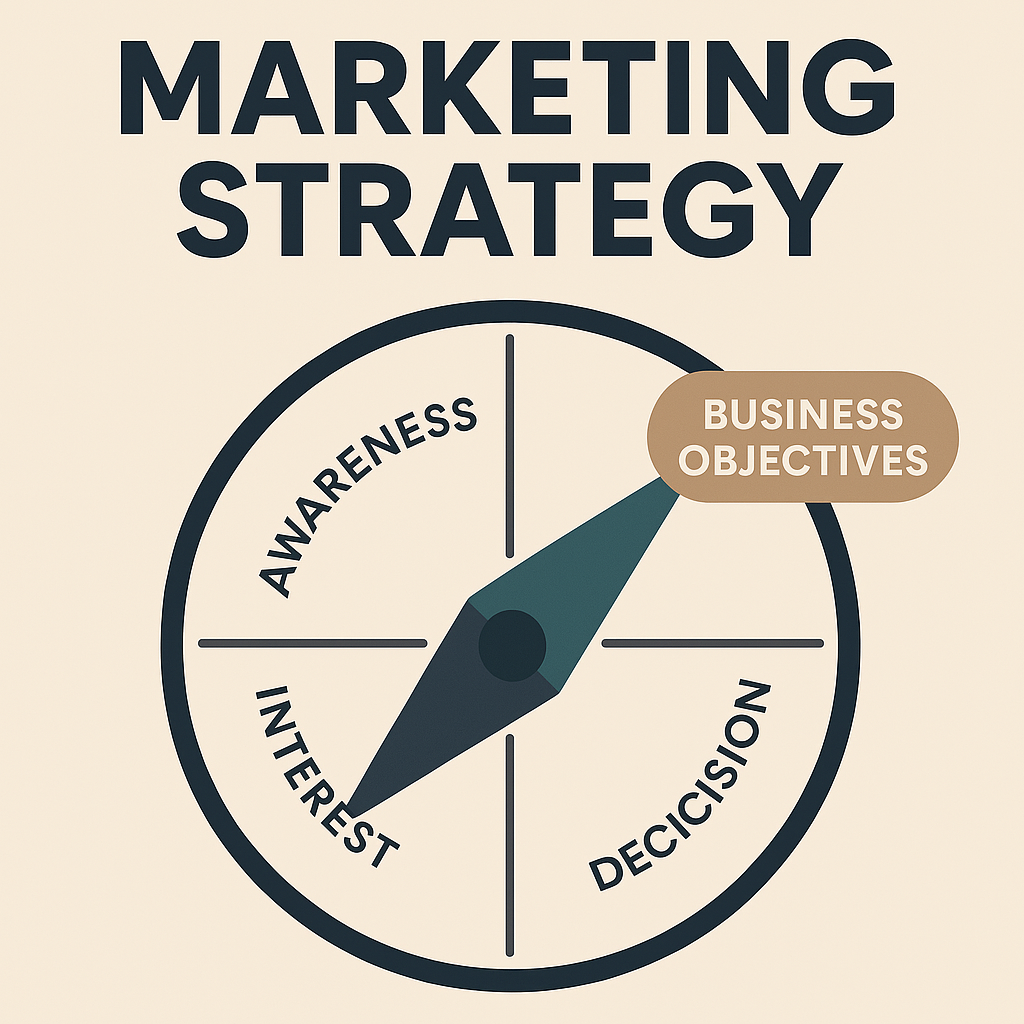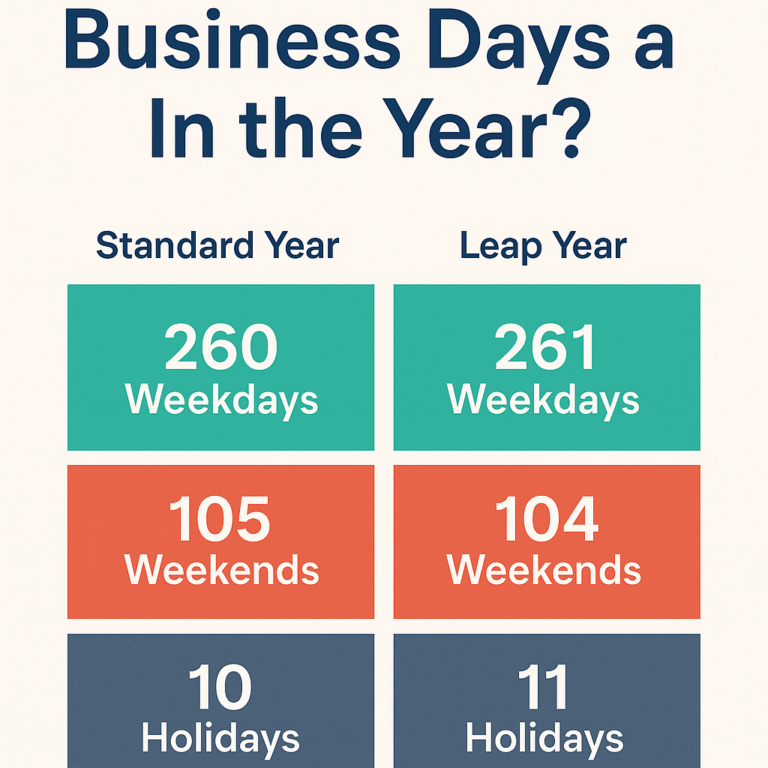Marketing Strategy
Introduction
A marketing strategy is the foundation of any successful business growth plan. It’s not just about advertising or posting on social media — it’s a structured approach that aligns your brand’s message, audience, and goals to drive measurable results. Whether you’re launching a new product, entering a new market, or trying to boost customer engagement, the right marketing strategy can make all the difference.
Ultimate Guide to Crafting a Winning Marketing Strategy
A marketing strategy is more than just a plan — it’s the blueprint that guides your business toward growth. In today’s crowded market, a clear and effective marketing strategy is what separates successful brands from those that struggle to gain traction.
In this ultimate guide, we’ll walk you through the essential components of building a marketing strategy that works — from setting goals to choosing the right channels and measuring results.
What Is a Marketing Strategy and Why It Matters
A marketing strategy is a comprehensive plan that outlines how your business will attract, convert, and retain customers. It includes your goals, target audience, brand messaging, and the channels you’ll use to reach people.
Without a strategy, your efforts are likely to be scattered. A strong marketing strategy gives you direction, focus, and a clear way to measure success.
A marketing strategy also aligns your marketing efforts with your business goals. Whether your aim is to boost brand awareness, increase website traffic, generate leads, or drive sales, your strategy helps ensure that every action you take moves you closer to those goals.
Key Components of an Effective Marketing Strategy
To build a solid foundation, your marketing strategy should include:
- Defined objectives
- Buyer personas
- Competitive analysis
- Messaging and positioning
- Channel mix
- Budget allocation
- Metrics and KPIs
Each of these components works together to create a unified approach that increases your chances of success.

How to Define Your Marketing Goals and Objectives
Start by asking: What do you want your marketing to achieve?
Use the SMART framework:
- Specific
- Measurable
- Achievable
- Relevant
- Time-bound
Align your marketing goals with broader business objectives. Break down goals into short-term and long-term milestones for better tracking.

Identifying and Understanding Your Target Audience
Your marketing strategy should always revolve around your audience.
Ask:
- Who are they?
- What are their pain points?
- Where do they spend time online?
- What influences their buying decisions?
Create buyer personas that include demographics, behaviors, and goals. These personas help you craft messaging that resonates and build campaigns that convert.

Choosing the Right Marketing Channels for Your Strategy
You don’t need to be on every platform — just the right ones.
Examples of channels:
- SEO
- Email marketing
- Social media
- PPC advertising
- Content marketing
Choose your channels based on where your audience spends time and how they prefer to engage with content.
Developing a Content Marketing Strategy That Converts
Content helps educate your audience, build trust, and guide people through the buyer’s journey.
Focus on:
- Blog posts
- Webinars
- Case studies
- Videos
- Infographics
Use a content calendar to stay consistent. High-quality content drives long-term growth and increases credibility.
Leveraging Social Media in Your Marketing Strategy
Social media builds brand awareness and engages your audience.
Create platform-specific content:
- Instagram: Reels, behind-the-scenes
- LinkedIn: Industry news, thought leadership
- Facebook: Community engagement
- TikTok: Creative videos
Use social media to promote your content and drive traffic..
SEO and Email Marketing: Core Elements of a Modern Marketing Strategy
Search Engine Optimization (SEO)
SEO ensures your content ranks well in search engines.
Key areas:
- Keyword research
- On-page SEO
- Site performance
- Backlinks
Email Marketing
Email marketing is one of the highest-ROI channels.
- Grow your list through lead magnets
- Segment your audience
- Send personalized, targeted campaigns
Use email to nurture leads and maintain relationships.
Tracking Performance and Optimizing Your Marketing Strategy
A marketing strategy must be measurable.
Track:
- Traffic
- Conversions
- Click-through rates
- Engagement
- ROI
Use tools like Google Analytics, HubSpot, and SEMrush. Adjust based on data to improve performance.

Common Marketing Strategy Mistakes to Avoid
Avoid:
- No clear goals
- Misunderstanding your audience
- Too many channels
- No performance tracking
- Giving up too early
Effective marketing requires consistency and learning from results.
Image suggestion: Fun illustration of “do’s and don’ts” in a checklist format.
Real-World Examples of Successful Marketing Strategies
- Airbnb: User-generated content and referrals.
- Nike: Storytelling and influencer marketing.
- HubSpot: SEO and inbound marketing.
- Slack: Product-led growth.
- Glossier: Community-driven brand building.
These brands aligned their strategies with their audiences and goals.
Conclusion
A strong marketing strategy is the backbone of sustainable business success. It gives your brand a clear direction, aligns your efforts with measurable goals, and helps you connect meaningfully with your audience. Whether you’re a solo entrepreneur or part of a growing team, taking the time to craft a well-thought-out strategy can save resources and maximize your impact.
As markets evolve and customer behaviors shift, your strategy should remain flexible. Test, analyze, and adapt. Stay focused on your audience’s needs and let data guide your decisions. The businesses that thrive are those that treat their marketing strategy as a living, breathing part of their growth journey — not a one-time task.
If you apply the insights from this guide and commit to consistency, your brand will be well-positioned to grow, compete, and lead in your space..






